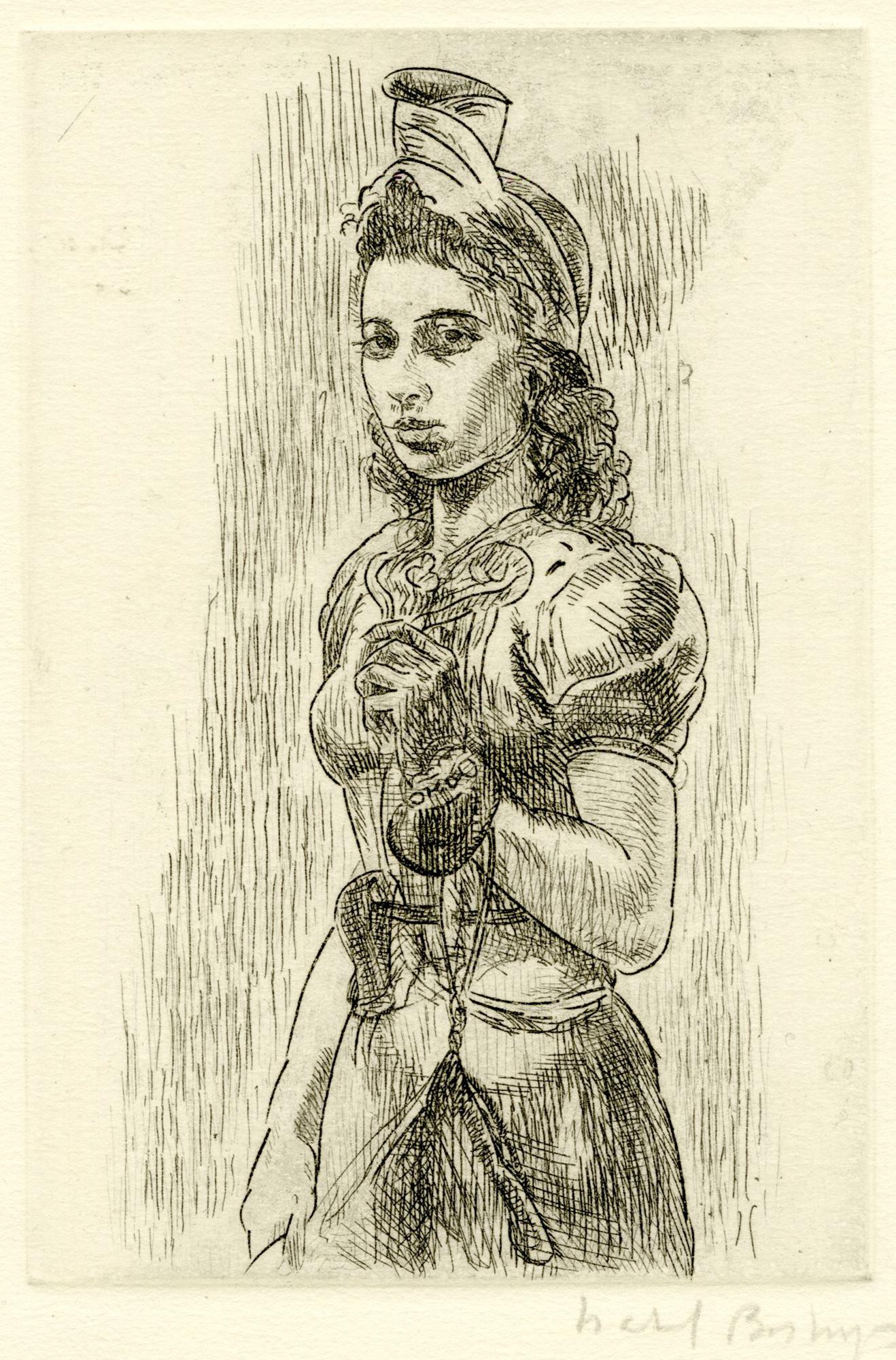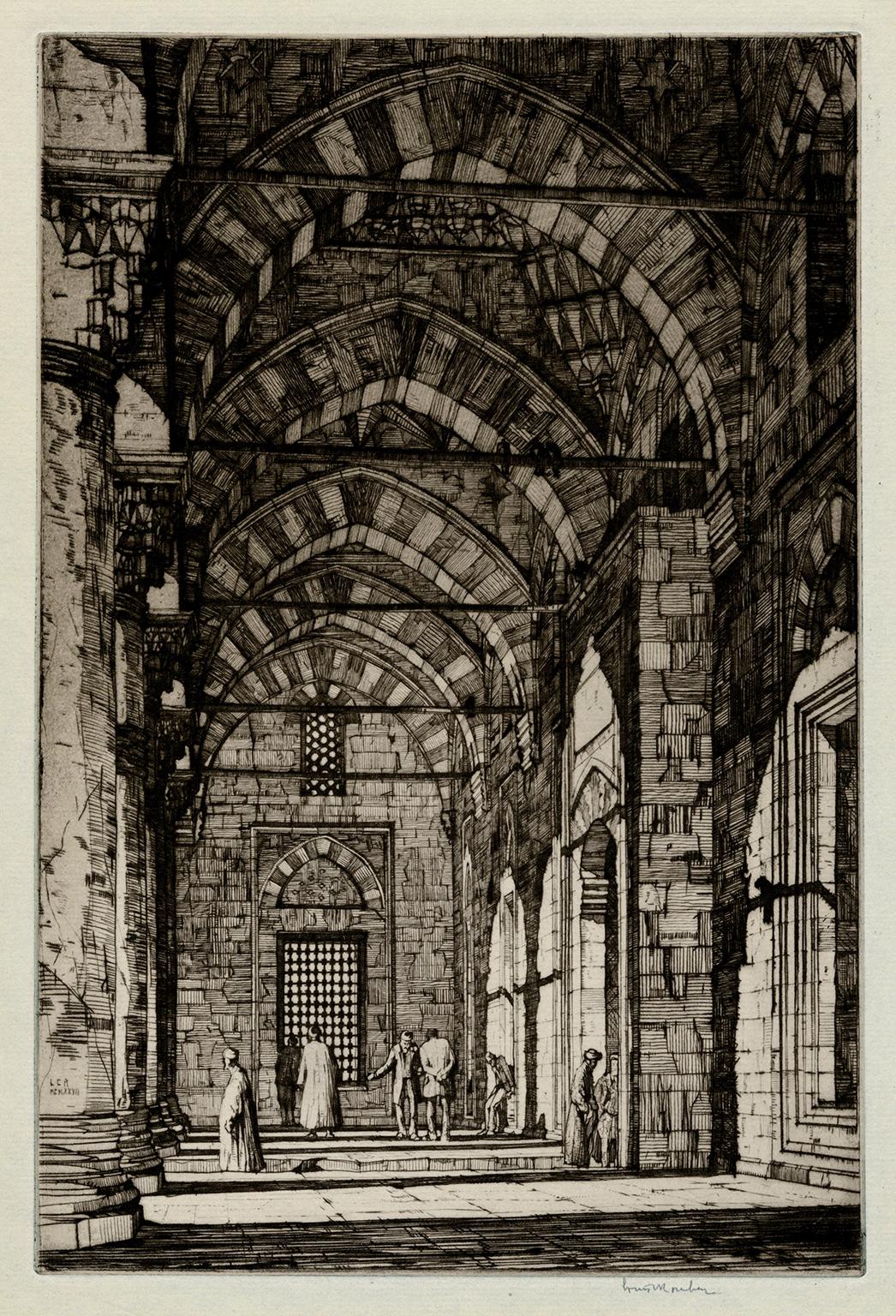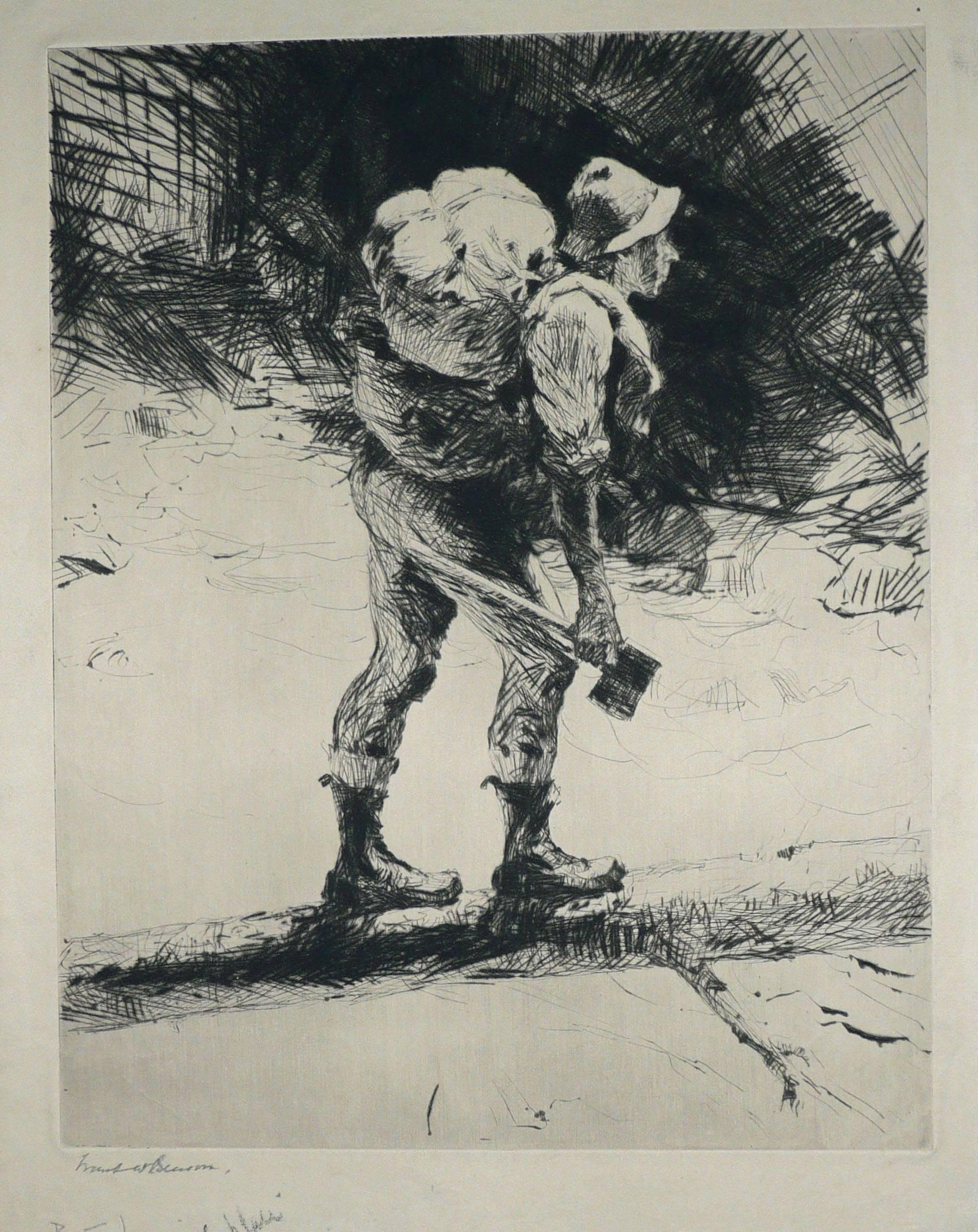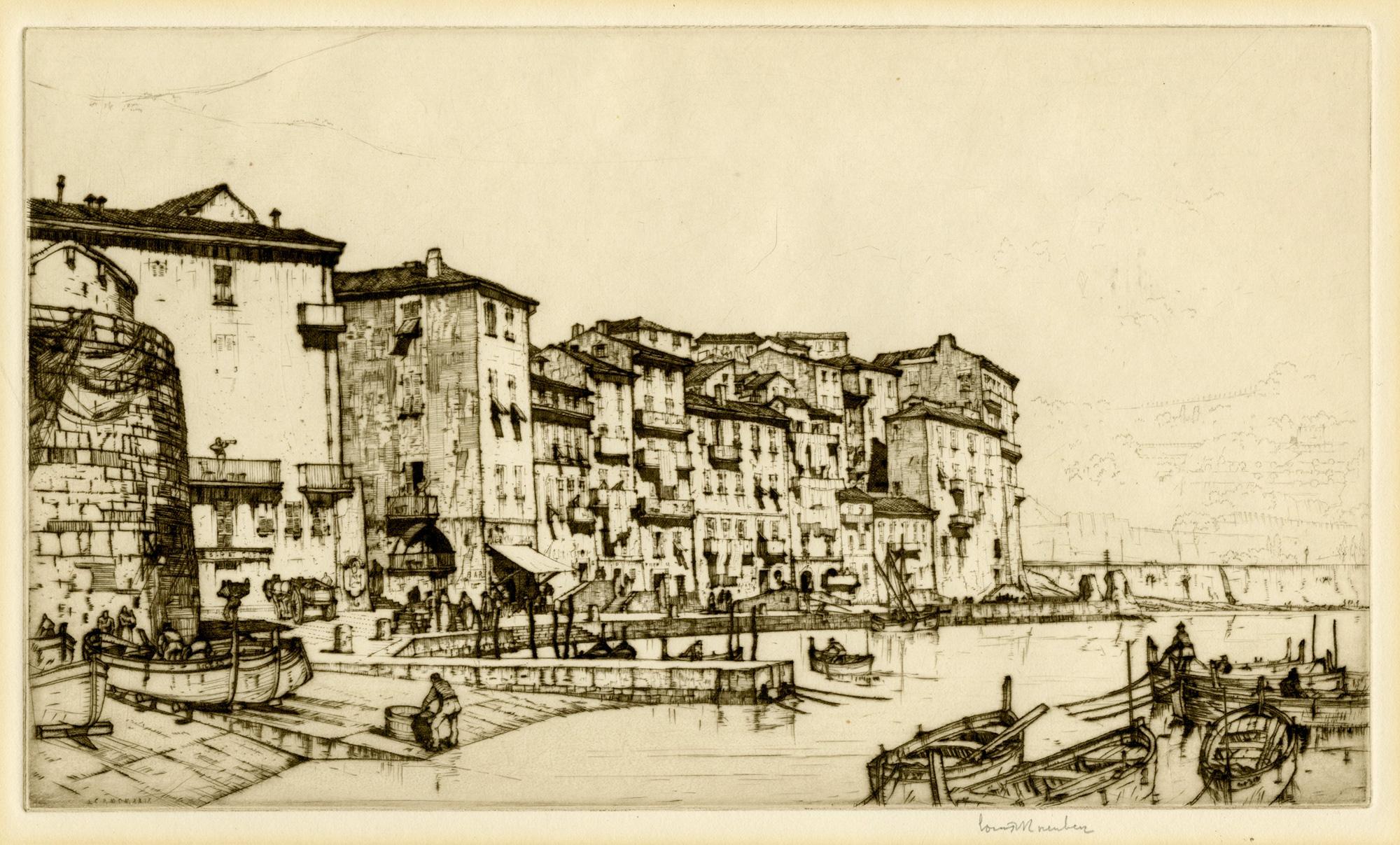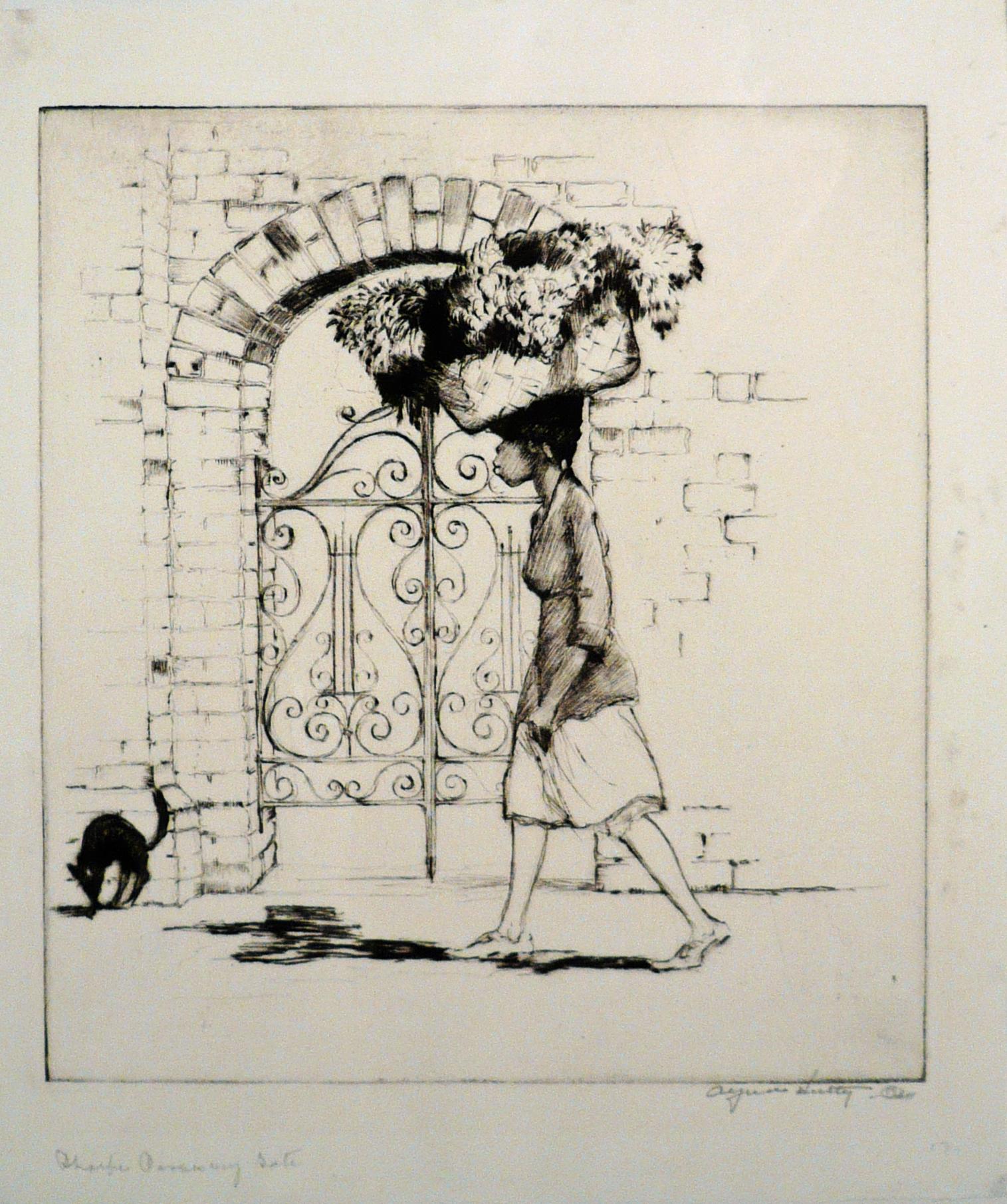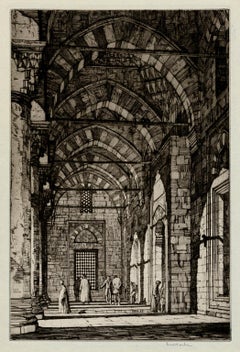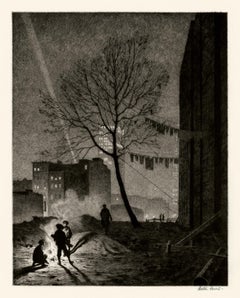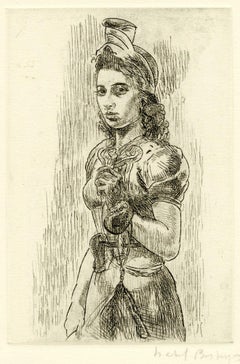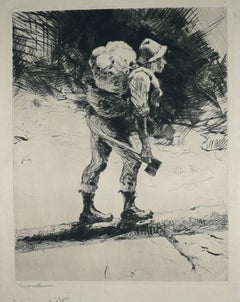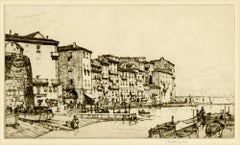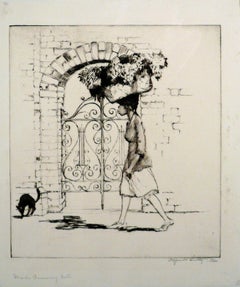Armin LandeckStudio Interior No. 1 — 1930s Masterwork1935
1935
About the Item
- Creator:Armin Landeck (1905-1984, American)
- Creation Year:1935
- Dimensions:Height: 7.94 in (20.17 cm)Width: 10.63 in (27.01 cm)
- Medium:
- Movement & Style:
- Period:
- Condition:
- Gallery Location:Myrtle Beach, SC
- Reference Number:Seller: 1021011stDibs: LU53234289251
Armin Landeck
Printmaker Armin Landeck was born in Crandon, Wisconsin, and spent his childhood in Oshkosh and in Toledo, Ohio. Before enrolling at Columbia University, he studied for two years at the University of Michigan. In New York he took summer classes at the Art Students League and visited the city's museums and galleries. By the time of his graduation from Columbia in 1927, he had become interested in printmaking and had bought a used press. In 1928 and 1929 he traveled and worked in Europe, seeing the work of the old masters and also modern art, sketching and making etchings wherever he could find an opportunity to use a press. He was greatly interested in the cubist art he saw in Paris, and the angular facets of his early compositions reflect that fascination. Returning to the United States in 1929, he settled on a farm in East Cornwall, Connecticut, but spent a great deal of time in New York City, moving back there in 1935 to teach printmaking. Throughout the 1930s he worked in etching, aquatint, drypoint, and lithography. Study with Stanley William Hayter at the New School for Social Research in New York in the early 1940s led to Landeck's extensive use of the engraving medium, but he continued to work in other etching media as well. In 1953 he was awarded a Guggenheim Fellowship that permitted him to work in Paris and to travel again through Europe. He retired from teaching in 1958 and moved back to his Connecticut farm, where he died in 1984. Landeck focused on the city in much of his work. As a student at Columbia University, Landeck earned a degree in architecture, and this training is reflected in his careful rendering of buildings and their details. In Pop's Tavern, Landeck captured both the look and the mood of an American city in the 1930s. The lighted interiors in Pop's Tavern seem to draw people in from the dark, empty streets.
- ShippingRetrieving quote...Shipping from: Myrtle Beach, SC
- Return Policy
More From This Seller
View All1920s American Realist Figurative Prints
Drypoint
1940s American Realist Figurative Prints
Drypoint
1930s American Realist Figurative Prints
Drypoint
1930s American Modern Figurative Prints
Drypoint
1940s Surrealist Figurative Prints
Drypoint, Etching
1920s Bauhaus Figurative Prints
Drypoint
You May Also Like
Mid-20th Century American Realist Portrait Prints
Drypoint, Aquatint
20th Century American Realist Figurative Prints
Drypoint
Early 20th Century American Realist Landscape Prints
Drypoint, Etching
1930s American Realist Figurative Prints
Drypoint
Mid-20th Century American Realist Figurative Prints
Drypoint, Etching
1930s American Realist Figurative Prints
Drypoint
